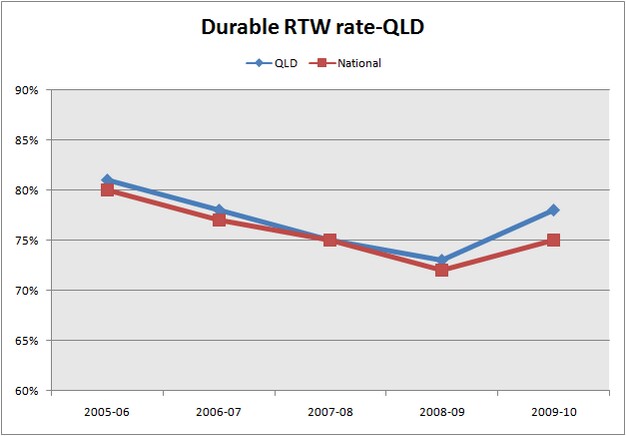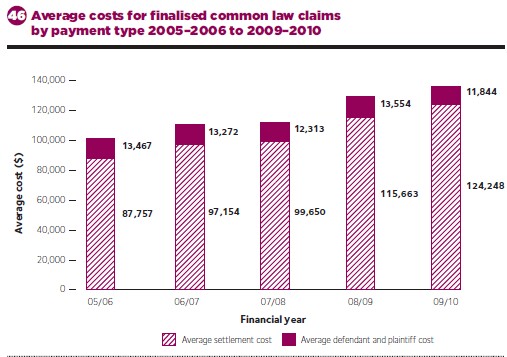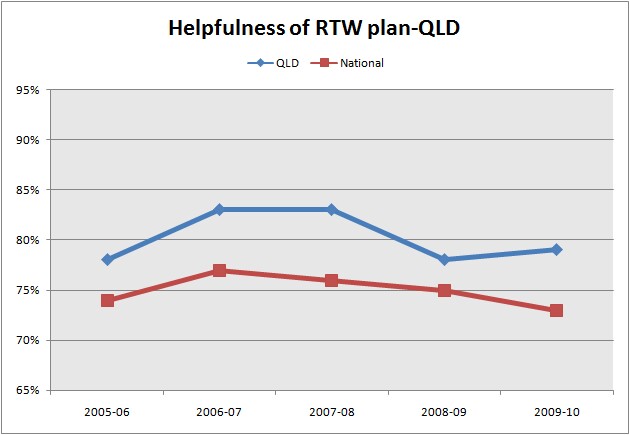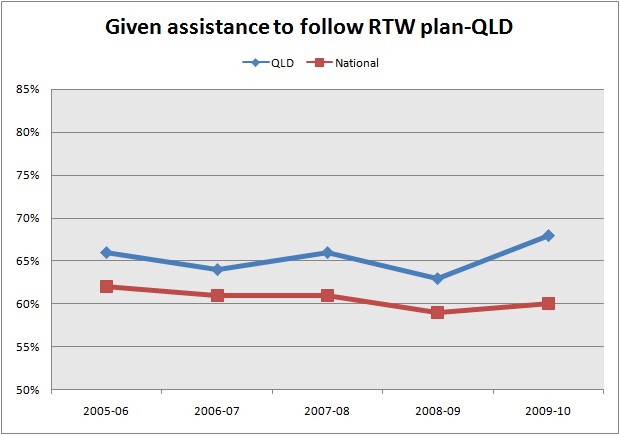Sunshine state

Unlike most other Australian jurisdictions, Queensland has a publicly managed workers' compensation scheme, with case management done by employees of WorkCover Queensland, which is a part of the publicly run system.
Workers' comp benefits cease after five years, so Queensland has no long-term claimants. Long term claims may be settled via common-law.
Over the last three years there has been a major rise in both the number and cost of common-law claims, without a corresponding increase in the number of serious injuries. There have been various suggestions as to what is behind this rise, and many are concerned that the major beneficiaries are the lawyers lodging the claims.
According to the statistics report accompanying the 2010 Queensland Annual Report:
- Common law claim lodgements have continued to increase since 2005-2006. Over the past year, common law claim lodgements have increased by 18.2% (from 3,768 in 2008–2009 to 4,452 in 2009–2010).
- The total amount paid out through workers’ comp in Queensland increased by 14% over the 12 months leading up to 2010. Common law payments increased by 36%, with statutory payments down by 2%.
|
|
|
Measures have been put in place to try to stem the increase in common law claims, but the controversial threshold of 10-15% of AMA whole person impairment that employer groups were lobbying for was not implemented by the Queensland government. This would have prevented a large percentage of employees being eligible for common law in Queensland.
Instead, the government opted to undertake a structural review of institutional and working arrangements within Queensland’s workers’ comp scheme, examining “claims management, common law settlements, rehabilitation and return to work”.
The government also took aim at speculative and opportunistic claiming, by increasing the onus of proof to prove employer fault in relation to common law claims and allowing courts to award costs against workers whose common law claims are not successful.
Another change is to the referral process for the Return to Work Assist program. Since July 2010, employees who do not have a job at the end of their claim must be referred to the program, although participation remains voluntary. However, workers who want to lodge a common law claim have an incentive to participate in Return to Work Assist: if they don't, the courts will take this into account when calculating their common law payout.
Which bring us to the important issue of return to work.
Over the last two years Q-Comp and WorkCover Queensland have embraced return to work as an important component of the compensation system. That return to work is part of workers’ comp may seem self evident, however in some schemes return to work seems to have become a low level priority.
How have Q-Comp and WorkCover Queensland gone about doing this?
Elements we are aware of include:
- Integration of case management, so one person at WorkCover Qld manages return to work and the claim administration / claim decisions for a case.
- The same case manager works with the employer to improve systems at the workplace.
- New case managers now move through a developed training and work path, designed to ease them into the complex role of managing work injuries.
- A focus on return to work, with early claim lodgement to the case manager focusing on return to work, dealing with the important issues that impact return to work.
- An ability to close a file and bring a case to conclusion when there is evidence of lack of progress or lack of participation.
And more importantly, there is a sense the organisation understands that outcomes are determined by people rather than process, that case managers need to be able to understand and work with people, and organisations need training and support.
RTW plans are used in a lower percentage of cases in Queensland than the national average. However, the graphs below show a greater proportion of employees consider the plans are helpful, and that they are given assistance to follow the plan when compared to the national average.
|
|
|
It's not all beer and skittles, but the focus on working with people seems to be paying off.
Over the last 12 months the durable or sustainable RTW rate increased from 73% to 78% in Queensland. Between 2005 and 2006 there had been a steady downward trend in RTW rates in Queensland and across the country. It is generally accepted RTW rates go down in an economic downturn and this would account for some of the drop between 2007-08 and 2008-09. The improvement in the durable RTW rate is greater than simply a bounce back that reverses the impact of the financial downturn.

Leaders in workers comp should be recognised for return to work outcomes. Premium rates and financial results are important but ought not to be the key driver. Queensland is taking a creative approach, making adjustments to the RTW scheme that are not just about finances, but also about people and processes.
We look forward to seeing the outcomes of these adjustments, over the next few years.
Published 15 November, 2010


.jpg)


